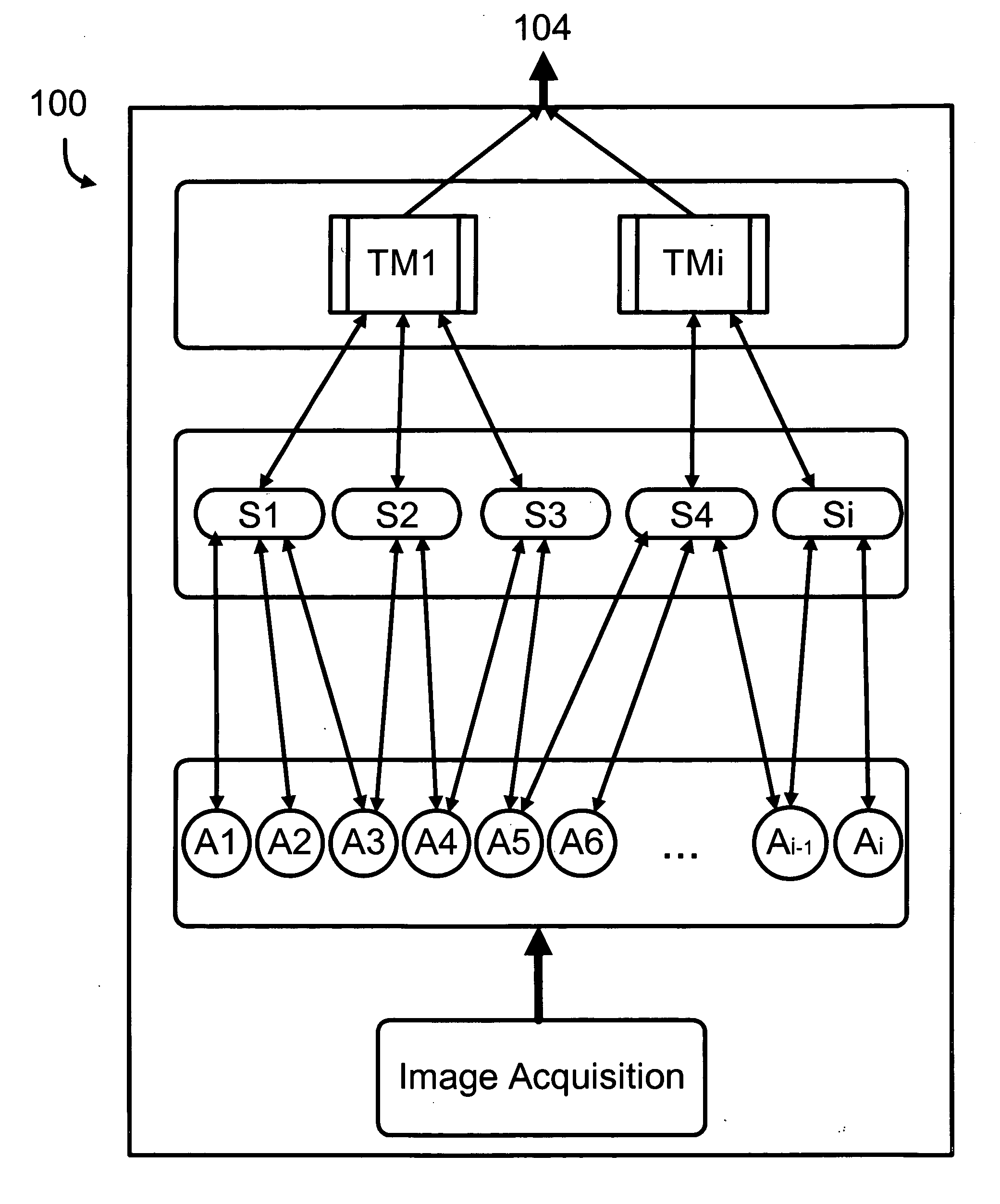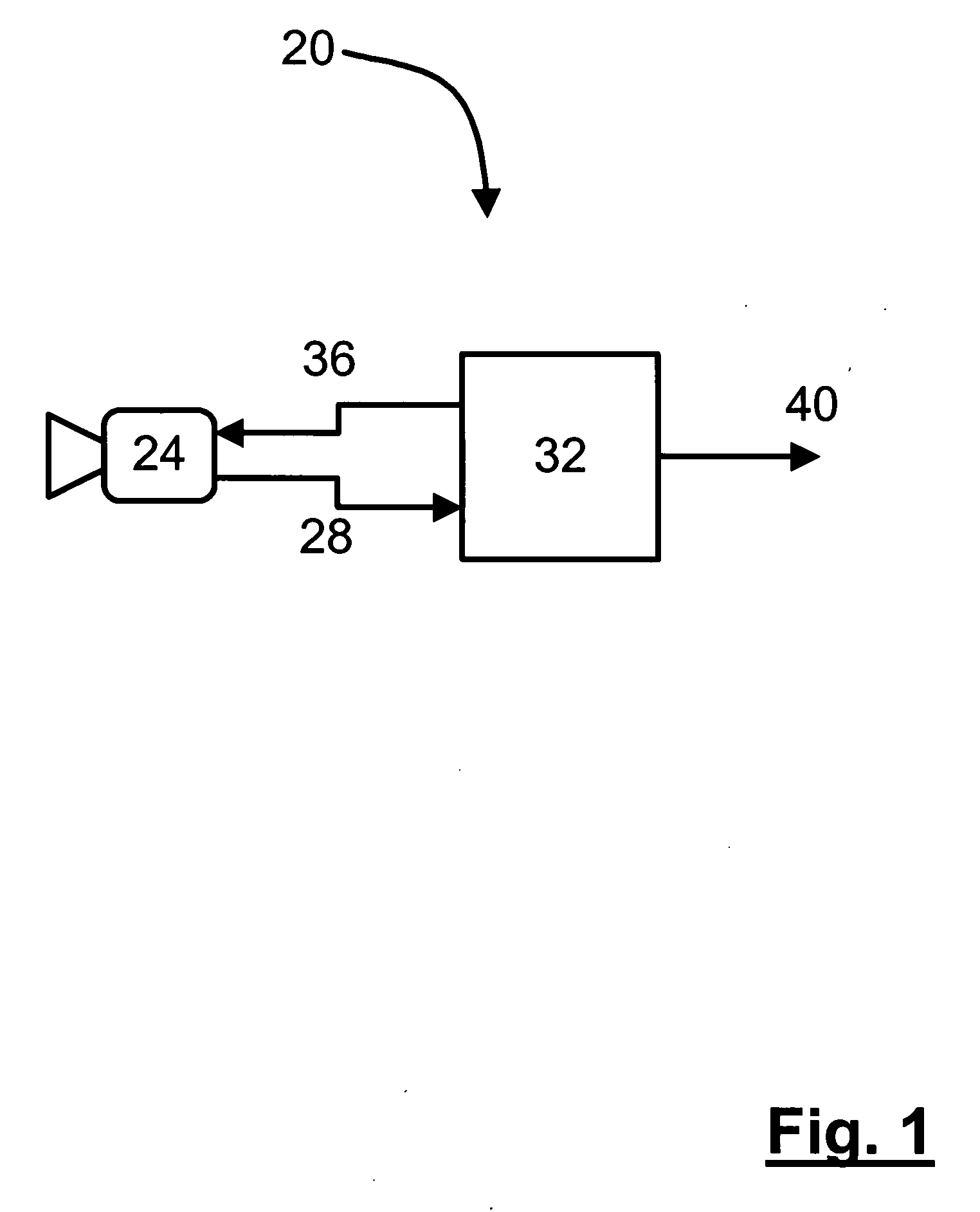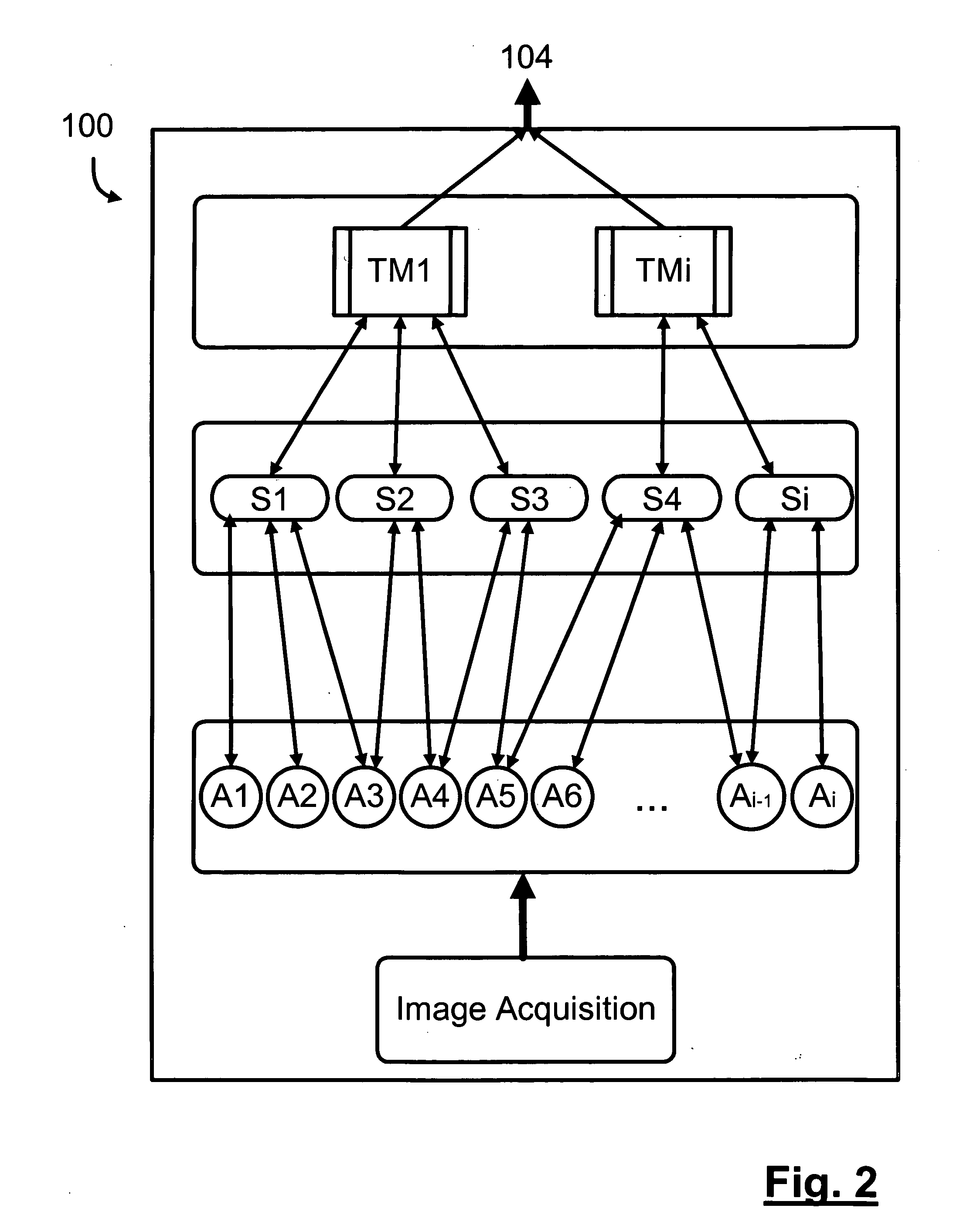Image-based vehicle occupant classification system
a vehicle occupant and classification system technology, applied in the field of image-based vehicle occupant classification system, can solve the problems of aggravated vehicle occupant injury, large force generated by deployment, and children and small adults can be injured by airbag deploymen
- Summary
- Abstract
- Description
- Claims
- Application Information
AI Technical Summary
Benefits of technology
Problems solved by technology
Method used
Image
Examples
Embodiment Construction
[0016] An image-based occupant classification system is indicated generally at 20 in FIG. 1. As used herein, the term “classification” is intended to comprise identifying the occupant, or lack of occupant, with respect to a set of classifications including at least those classifications defined by safety regulations or statute. Presently, such classifications include different classifications representing different sizes of adult occupant, different sizes of child occupant and different configurations of children in child restraint seats. As will be apparent from the following discussion and explanations, the present invention is not limited to operation with any particular set of classifications and can instead easily be adapted as desired to classify vehicle occupants according to any desired classification scheme.
[0017] Further, as will be also apparent from the discussion below, the present invention is not limited to use with any particular hardware configuration and / or equipm...
PUM
 Login to View More
Login to View More Abstract
Description
Claims
Application Information
 Login to View More
Login to View More - Generate Ideas
- Intellectual Property
- Life Sciences
- Materials
- Tech Scout
- Unparalleled Data Quality
- Higher Quality Content
- 60% Fewer Hallucinations
Browse by: Latest US Patents, China's latest patents, Technical Efficacy Thesaurus, Application Domain, Technology Topic, Popular Technical Reports.
© 2025 PatSnap. All rights reserved.Legal|Privacy policy|Modern Slavery Act Transparency Statement|Sitemap|About US| Contact US: help@patsnap.com



